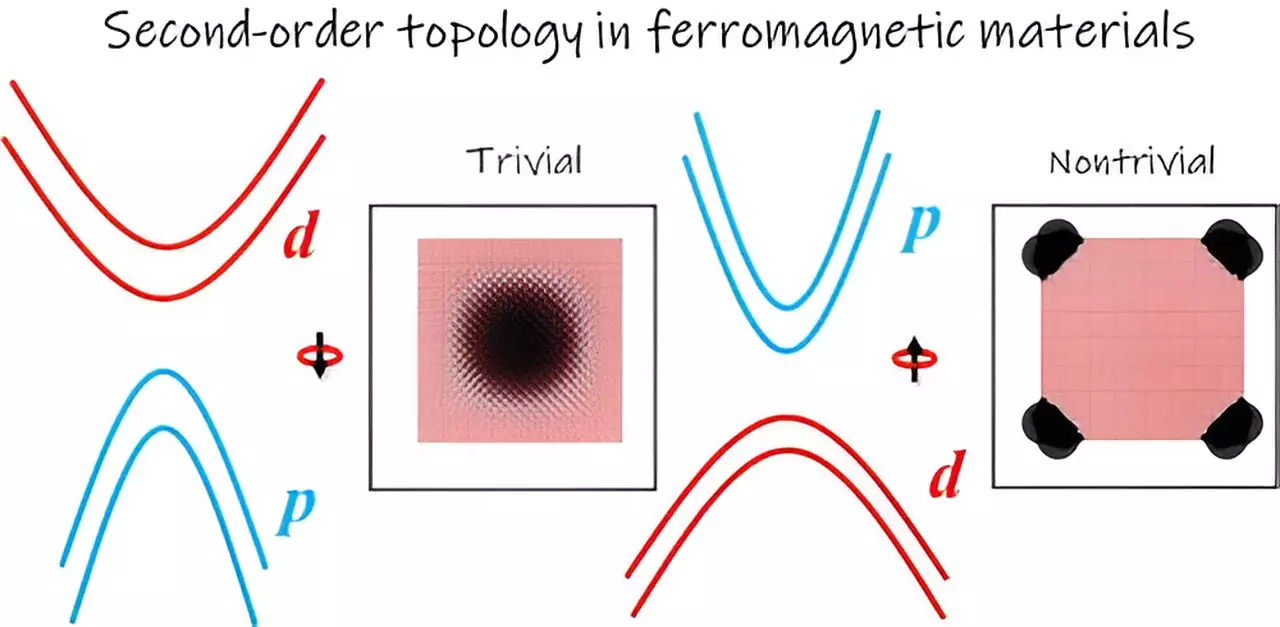In recent years, the field of spintronics has taken center stage in materials science, spurred by a desire to harness the spin of electrons, alongside their charge, to develop faster and more efficient electronic devices. Researchers at Monash University, affiliated with the prestigious FLEET Center, have made significant strides towards establishing intrinsic magnetic second-order topological insulators. Their findings, recently published in Nano Letters, underscore the importance of these novel materials in expanding the horizons of spintronics, offering prospective pathways for technological advancements.
Topological insulators, once considered a niche area of study, have emerged as key players in modern physics and materials science. These materials are characterized by their unique ability to insulate in their bulk form while allowing the conduction of electricity along their surfaces. The introduction of second-order topological insulators adds a new dimension to this field, extending the idea of conductivity to what may be termed (m-2)-dimensional states on the boundaries of m-dimensional materials. This progression signifies not just a theoretical advancement but a foundational shift towards material systems that exhibit unprecedented electronic properties.
At the core of their research, Dr. Zhao Liu and Professor Nikhil Medhekar explored the complex behavior of intrinsic ferromagnetic semiconductors. Typically, these materials are marked by strong electron-electron correlations that inhibit the expected electron communication between neighboring atoms, thereby resembling atomic insulators devoid of any significant topological features. This complex interplay of interactions presents significant challenges for researchers attempting to bridge the gap between the intrinsic magnetic states and usable topological properties.
The traditional approach to ferromagnetic semiconductors has largely depended on the conventional ordering of p and d orbitals, with the p orbitals being energetically favorable in providing super-exchange interactions between metal cations. However, the Monash team discovered that such characteristics can be inverted, leading to the emergence of novel topological phases. By examining how p orbitals can, under specific conditions, occupy higher energy levels than d orbitals, the researchers have identified a pivotal shift that opens up new avenues for understanding topological behavior in magnetic materials.
New Candidates for Topological Insulators
The Monash University study focuses on two promising materials: 1T-VS2 and the CrAs monolayer. Both of these candidates exhibit distinct lattice structures—1T-VS2 forms a hexagonal lattice, while CrAs presents a square lattice configuration. A critical observation from their research highlights that 1T-VS2 shows an inverted p-d orbital configuration in its spin-up channel, leading to a nontrivial topological phase. Conversely, the spin-down channel maintains a traditional p-d configuration, resulting in a trivial topological phase. This duality provides a fascinating playground for the exploration of unique electronic characteristics.
Furthermore, the research proposes the use of spin-polarized scanning tunneling microscopy as a reliable method for investigating these states localized at specific lattice corners, thereby enabling empirical validation of these theoretical predictions. This methodology serves as a crucial step in not only affirming the existence of the anticipated states but also in paving the way for future practical applications in spintronics.
The implications of this research extend beyond the immediate scope of topological insulators. The findings suggest that the principles underlying the inverted p-d orbital characteristics could be applicable to Kondo insulators, which feature similar orbital interactions. Professor Medhekar’s insight emphasizes the exciting potential for uncovering second-order topological Kondo insulators, thereby widening the landscape of materials worthy of exploration.
The pursuit of such materials could redefine our understanding of quantum states in condensed matter physics and influence a range of technological applications rooted in spintronics. Consequently, the intersection of topology, magnetism, and electronic correlation presents an intriguing frontier that beckons further study.
The pioneering work conducted by the researchers at Monash University represents a significant leap forward in the quest to understand and utilize intrinsic magnetic second-order topological insulators. With these advancements, the vision of a revolutionized electronic landscape, driven by spintronics, seems both promising and within reach.


Leave a Reply